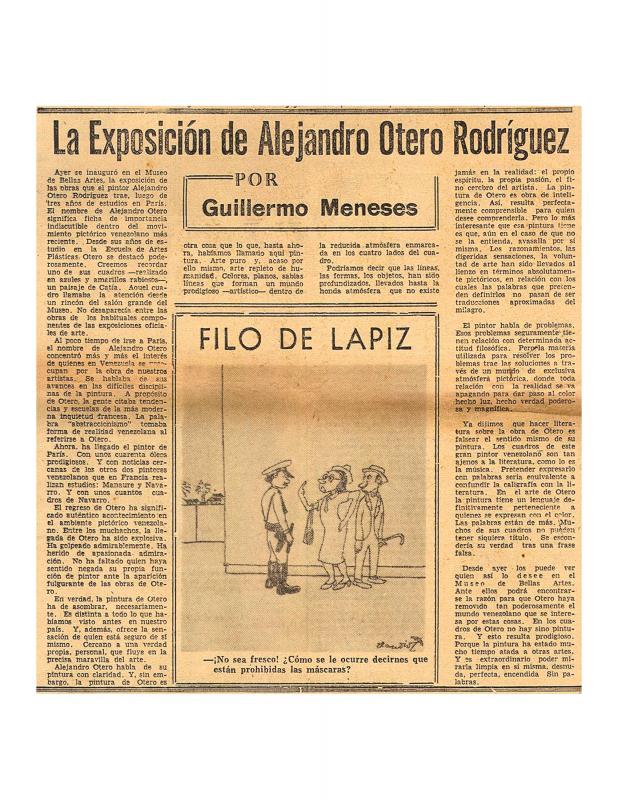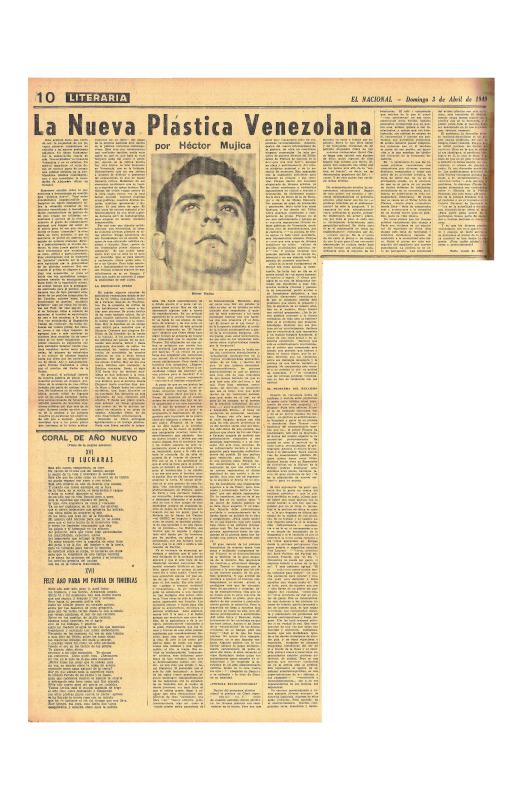In 1999, the Galería de Arte Nacional (GAN) in Caracas organized the exhibition Sólo quisiera ser puntual, curated by the Venezuelan art researcher Ernesto Guevara. The title alluded to the last essay written by the painter and sculptor himself, the Venezuelan Alejandro Otero (1921–1990), published one month before he died in 1990. The exhibition sought to address the work created over the artist’s lifetime from a “temporal” perspective, linking his expressive modulations to experiences or explorations related to his own experience of time. Guevara’s text introduces an interesting possible perspective: Otero’s concern to be “in tune with his times” and later, his need “on time.” With this perspective, this text offers a different reading from the conventional reading—focused only on abstract geometric art—adding the “time” factor as just one more element of the narrative that Constructive art usually sought to displace. Similarly, Guevara brings up a range of Otero’s temporal concepts and experiences. Starting with his figurative work, the critic passes through work that was progressively more abstract, concluding with a kind of implosion of time that materializes in the artist’s three-dimensional work. It is noteworthy that this reading applies to the pictorial work more than the sculpture; it is there where the inclusion of movement and interaction of elements in the environment favor the perception of a given time. To Guevara, Otero’s final work represents a liberation from time; in other words, it incorporates a declaration that artwork exists beyond its referential quality. For other critical texts on Otero’s work, see the ICAA digital archive: by J.R. Guillent Pérez, (another member of Los Disidentes) “Realidad e irrealidad: El postigo de Alejandro Otero” (doc. no. 1172158); by Guillermo Meneses, “La exposición de Alejandro Otero Rodríguez” (doc. no. 1097092); by Roberto Guevara, “La vertical vibrante de Maracay, 1968” (doc. no. 1168201); the text in the catalogue for the exhibition Alejandro Otero (1949) (doc. no. 850732); the article “La nueva plástica venezolana,” by Héctor Mujica (doc. no. 850512); the text by María Elena Ramos, “Alejandro Otero: indagar en las estructuras de la realidad” (doc. no. 1167733); the essay by Damián Bayón, “El espacio dinámico en la obra de Alejandro Otero” (doc. no. 1167828); two texts by Juan Calzadilla, “Exposiciones en Caracas: Alejandro Otero-Galería Mendoza” (doc. no 1172174) and “Alejandro Otero y la enseñanza del arte” (doc. no. 1167940); the article by Miguel Otero Silva, “Sobre unas declaraciones disidentes del pintor Alejandro Otero Rodríguez” (doc. no. 813737); and finally, reviews by both José Ratto-Ciarlo, “En pro y en contra de Alejandro Otero” (doc. no. 850770) and Juan Carlos Palenzuela, “Una conciencia de arte latinoamericano” (doc. no. 1163142).












